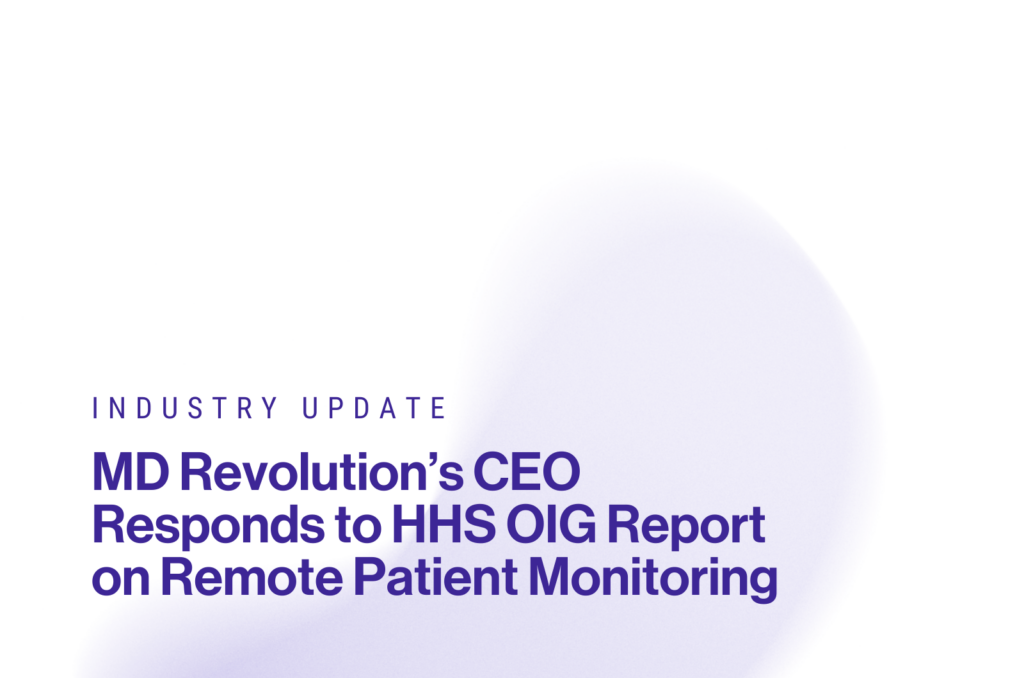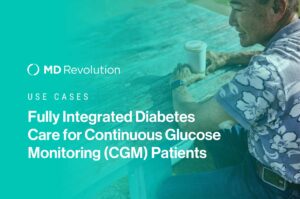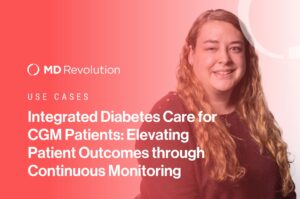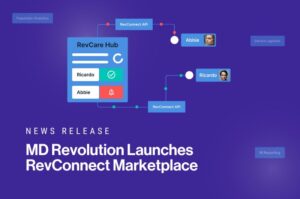At MD Revolution (MDR), our core mission is to improve patient outcomes through innovative, ethical, and patient-centered remote care management. Integrity, transparency, and a commitment to the highest standards of patient care are the foundational principles that guide every aspect of our operations. As a leader in Medicare-sponsored Remote Care Management services, including Remote Patient Monitoring (RPM), we have consistently demonstrated our dedication to these values.
It is from this standpoint that we feel compelled to respond to the recent report released by the Office of Inspector General (OIG) at the Department of Health and Human Services (HHS) on September 24th, 2024. While we wholeheartedly support the OIG’s mission to identify and eliminate fraud, waste, and abuse, we believe it is crucial to address certain aspects of the report that may inadvertently mischaracterize the RPM landscape and potentially hinder access to these vital services for Medicare beneficiaries.
Since 2020, MDR has been at the forefront of the expansion of RPM services, witnessing firsthand the transformative impact on patient care. Every day, we see patients realize the value of sharing their health data, which providers rely on to provide higher quality, more responsive care that leads to improved health outcomes. Our commitment to evidence-based practice is reflected in the numerous studies MDR and other companies have published demonstrating the tangible benefits of RPM. These include significant reduction in hospital readmissions, improvements in key health indicators such as blood pressure, weight, and HbA1c levels, as well as improvements in several other risk factors.
We believe the best use of RPM is built around enrollees’ clinical care plans, combined with clinician support and patient engagement channels, all in coordination with the medical practice.
While we appreciate the OIG’s efforts to ensure program integrity, we share the concerns raised by the Alliance for Connected Care regarding inaccuracies and overgeneralizations in the report. These mischaracterizations could lead to confusion among healthcare providers and patients, potentially hindering access to valuable RPM services for those who need them most.
After careful review of our policies and procedures, we are proud to be identified as a reputable company that follows all CMS regulations and already solves many of the OIG’s concerns. We welcome the opportunity to share our experience and business practices with the OIG and CMS. For example:
- We do not make unsolicited contact with enrollees, engaging only with those authorized by their provider after determining Medical Necessity.
- We require Medical Necessity to be documented in the enrollee’s patient record and we create a personalized care plan.
- We do not bill Medicare directly for completed services. All claims are submitted by the provider that provides General Supervision for the services, following internal QA controls and compliance review.
- The claims always specify the condition being monitored, align with the enrollees’ medical needs, and identify the ordering provider.
- We only create claims for the monthly services earned, based on the criteria set forth in the CPT/HCPCS codes.
- We meticulously document all “incident to” staff delivering services. “Incident to” billing is crucial to the supervising provider’s ability to provide RPM services, which create thousands of data points and patient interactions each month. Our software captures all transmitted health data, shares it with the ordering provider, and, depending on the provider’s EHR, pushes the health data directly into the patients’ charts.
The OIG report also provides analysis of the billing of RPM services in 2022. We disagree with several of the conclusions drawn from the data. Primarily, the report states, “Although CMS does not require that providers bill for all three components, the high percentage of enrollees who did not receive all components raises questions about whether these services are being used as intended.” In practice, we experience similar percentages, but the cause is related to the billing requirements of the component codes. For example:
- CPT code 99454 requires 16 days of readings or programmed alerts per 30 days for billing. If 0 to 15 data points are captured, the provider cannot bill the code.
- Code 99457 requires 20 minutes of treatment management in a month. If 0-19 minutes are provided, the provider cannot bill the code.
Every month we and our “incident to” physicians provide non-reimbursable RPM services when these code thresholds are not met. We urge the OIG to reconsider their conclusion that enrollees are not receiving service if codes aren’t billed. In fact, we would consider a high percentage of patients receiving all of the possible components every month as a potential indicator of fraud, based on the difficulty of meeting the code service level thresholds.
We believe RPM reimbursement reform that provides more flexibility in service delivery will provide better transparency and improved alignment of cost and value. RPM reimbursement reform also enhances efforts needed to maintain on-going patient engagement and adherence. The American Medical Association recently considered changes to the RPM codes that may address some of these issues. If these code changes are finalized, CMS will have an opportunity to provide additional guidance that could assuage many of the OIG’s concerns.
As a company, we continue to experience growing demand from physicians for RPM technology and services. Clinical adoption will lead to even higher Medicare spend, which in our experience leads to improved patient care. As the OIG report states, “Remote patient monitoring is likely to continue to grow, given that 60% of all Medicare enrollees have hypertension, yet only a very small fraction of these enrollees currently receives it.”
We join the Alliance for Connected Care in calling for a more balanced perspective on RPM growth. While the report highlights a significant increase in RPM utilization, it’s important to consider this growth in the context of a new program starting from a very low baseline. Additionally, the report should acknowledge the positive findings, such as RPM’s effectiveness in reaching patients with chronic diseases and dual eligibles, as well as its potential to improve health equity.
As more patients receive services, we urge OIG and CMS to sponsor research on the value creation made possible by RPM technology. Let’s focus on removing the fraudsters while supporting the physicians and their vendors that are making healthcare more accessible, patient-centered and more data-informed.
We stand ready to collaborate with OIG, CMS, and other stakeholders to ensure the continued success and integrity of RPM services for Medicare beneficiaries.
Kyle Williams, CEO




